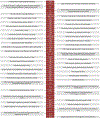Fungal taxonomy and sequence-based nomenclature
- PMID: 33903746
- PMCID: PMC10116568
- DOI: 10.1038/s41564-021-00888-x
Fungal taxonomy and sequence-based nomenclature
Erratum in
-
Author Correction: Fungal taxonomy and sequence-based nomenclature.Nat Microbiol. 2021 Jul;6(7):971. doi: 10.1038/s41564-021-00921-z. Nat Microbiol. 2021. PMID: 34045712 No abstract available.
Abstract
The identification and proper naming of microfungi, in particular plant, animal and human pathogens, remains challenging. Molecular identification is becoming the default approach for many fungal groups, and environmental metabarcoding is contributing an increasing amount of sequence data documenting fungal diversity on a global scale. This includes lineages represented only by sequence data. At present, these taxa cannot be formally described under the current nomenclature rules. By considering approaches used in bacterial taxonomy, we propose solutions for the nomenclature of taxa known only from sequences to facilitate consistent reporting and communication in the literature and public sequence repositories.
Conflict of interest statement
Competing interests
The authors declare no competing interests.
Figures



References
-
- Hawksworth DL & Lücking R in The Fungal Kingdom (eds Heitman J et al. ) 79–95 (ASM Press, 2017).
-
- Berbee ML, James TY & Strullu-Derrien C Early diverging fungi: diversity and impact at the dawn of terrestrial life. Annu. Rev. Microbiol 71, 41–60 (2017). - PubMed
-
- Wijayawardene NN et al. Outline of Fungi and fungus-like taxa. Mycosphere 11, 1060–1456 (2020).
Publication types
MeSH terms
Substances
Grants and funding
LinkOut - more resources
Full Text Sources
Other Literature Sources
Medical

